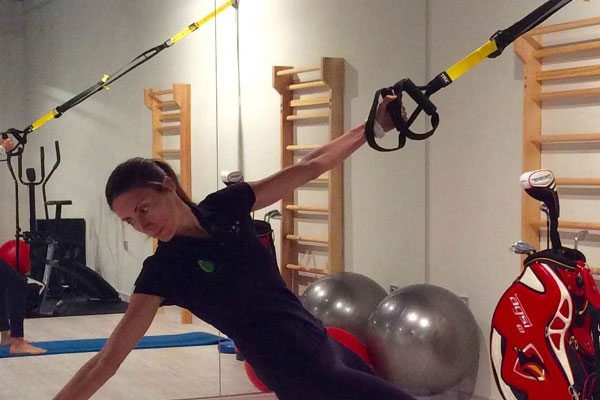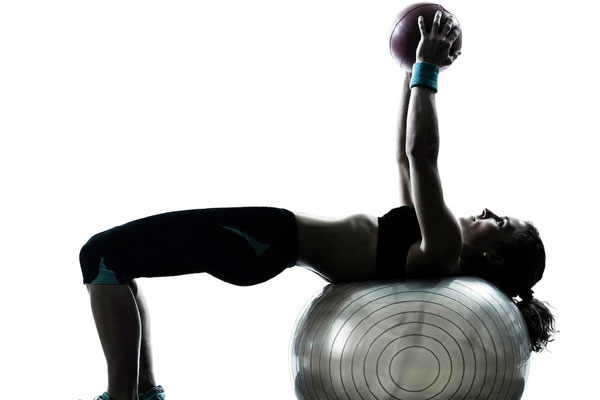Personal Training Functional Fitness
Functional fitness refers to exercises that improve daily activity. A functional exercise challenges balance and coordination while simultaneously improving strength and range of motion.
- Improve Daily Activity
- Balance & Coordination
- Strength
- Power
- Planes of Motion & Range of Motion
Call Steve, In-Training Sports| 561-281-8330
At the most basic level, functional fitness refers to exercises that improve daily activity. In my opinion, a functional exercise challenges balance and coordination while simultaneously improving strength and range of motion.
It’s about training for life, not events. We typically never have a specific goal in the gym until an event like New Year’s, summer vacation, a wedding, or a party. But sometimes we get so focused on losing weight and toning up before the event that nothing else at the gym matters. So it’s important that we shift our focus from training for events to training for performance and function, making daily activities easier. With this goal in mind, we'll stay fit year-round.
Balance & Coordination Training
A bicep curl on a BOSU Ball doesn’t constitute a functional exercise. In real life, we’re not standing on unstable surfaces very often, if at all. Bending down to pick up an object, standing on your toes to reach for something overhead, running up a flight of stairs, getting out of your car, and even gardening all rely on stability — and they take place on solid ground.
So try challenging your balance on a stable environment instead, with exercises like single leg balance exercises, lunges, jumping lunges, step-ups, lateral movements, posterior movements, agility drills, and plyometrics. Plus, on stable ground you’ll be able to handle a heavier weight load, which means you’re working at a higher intensity, burning more calories and developing more strength. Equipment like the BOSU Ball work to a certain degree and add some variety to a training routine, but you shouldn’t rely on them alone for stability training.
Strength Training
A functional exercise should be a multi-joint exercise and, ideally, it should work the upper and lower body. It’s all about creating synergy within our body. In daily activities, we utilize our body as a whole — even though an activity may be more upper- or lower-body dominant, we still rely on the other half for stability and support. Pushing a shopping cart, loading the groceries into the car, and putting away the packages are all examples of total body activities.
One benefit of combining multiple muscle groups is that you get more work done in less time, which means you see results faster. Another benefit is a boost in cardiovascular conditioning; while performing a traditionally anaerobic strength exercise, you also get an aerobic effect because your heart has to shuttle blood between the upper and lower body. And the neuromuscular system learns to fire more efficiently when you work several muscle groups at once, which leads to improved coordination.
Power
Power is a surprisingly important part of everyday life. You run up a flight of stairs, prevent yourself from falling, or reach to catch your cup before it tips: These are all examples of power. Power exercises are quick explosive movements, like Olympic lifts (the snatch, the clean and jerk), upper body plyometrics (explosive pushups, medicine ball slams, medicine ball throws) and lower body plyometrics (squat jumps, jumping lunges and speed skaters).
But power exercises aren’t limited to just plyometrics or Olympic lifts. In fitness, power refers to the result of work done over time. Take any exercise, even a compound exercise like the squat-to-press or a burpee and try to perform as many reps— with proper form— in a short time period (usually 20 to 60 seconds). You develop total body strength and overall power, so it’s easier to move quickly in real life.
Planes of Motion & Range of Motion
Humans are built to move backwards, forwards, up and down, and side-to-side. So we shouldn’t limit our workouts to a single plane of motion. We choose exercises that allow you to move in multiple planes, since it’s important to increase our range of motion. Instead of squatting until your legs are parallel with the ground, try going further down (assuming you don’t have any injuries). Going into a deep squat will help increase the range of motion in your hips — something we tend to lose after childhood but that we can gain back through an appropriate strength training and stretching program. And instead of just front lunges, try reverse lunges with an overhead reach or a reaching side lunge to increase range of motion while working in different planes of motion.
You should also add rotational movements into your workouts (e.g. add a lunge to a twist, or try a rotational cable press and woodchops). Rotational exercises help keep your spine healthy and limber, and develop core strength throughout the entire abdominal wall. While your range of motion may be limited at first, the more you work at it, the more your muscles, joints and ligaments will open and loosen up, giving you a greater range of motion.
You may already be doing some of these activities individually. Now it’s just a matter of combining them safely and effectively in a great functional exercise routine.
Call Steve, In-Training Sports | 561-281-8330
In Training Sports
www.intrainingsports.com
3131 Village Blvd, #305
West Palm Beach, FL 33409


